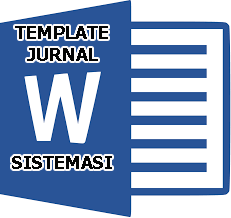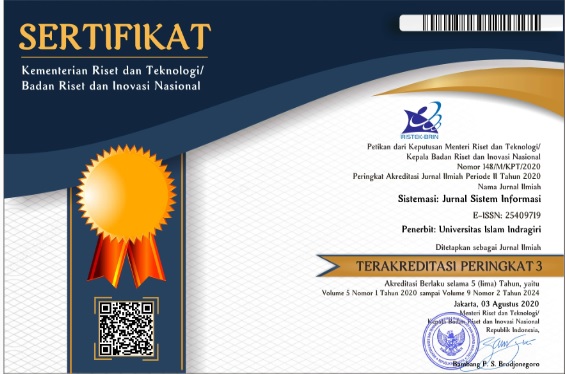Implementation of Fuzzy Time Series Markov Chain Method to Predict Electricity Consumption in Aceh Province
Abstract
Keywords
Full Text:
PDFReferences
N. Alter and S. H. Syed, “An Empirical Analysis of Electricity Demand in Pakistan,” International Journal of Energy Economics and Policy, Vol. 1, No. 4, pp. 116–139, 2011.
Y. T. Nugraha, “Analisis Perkiraan Konsumsi Energi Listrik di Sumatera Utara pada Tahun 2032 menggunakan Metode Adaptive Neuro Fuzzy Inference System,” Tesis Program Magister Teknik Elektro. Universitas Muhammadiyah Sumatera Utara, 2019.
International Energy Agency, “Scaling up Renewables in the Java-Bali Power System: A Case Study,” 2022. Retrieved October 12, 2022, from https://www.iea. org/articles/scaling-up-Renewables-in-the-Java-Bali-Power-System-a-Case- Study.
D. Mulyani, and D. Hartono, “Pengaruh Efisiensi Energi Listrik pada Sektor Industri dan Komersial terhadap Permintaan Listrik di Indonesia,” Jurnal Ekonomi Kuantitatif Terapan, 1, 2018. https://doi.org/10.24843/jekt.2018.v11. i01.p01.
Kesdm, “Rencana Usaha Penyediaan Tenaga Listrik PT Perusahaan Listrik Negara (Persero) Tahun2017 S.D. 2026 (Tech. Rep.), “Kementerian Energi dan Sumber Daya Mineral. Jakarta, 2017.
S. M. Ross, “Introduction to Probability Models,” Elsevier Inc, 2020.
B. Walsh, “Markov Chain Monte Carlo and Gibbs Sampling,” In Lecture notes for eeb 581, 2004.
M. Hariadi, A. A. Muhammad, and S.M.S. Nugroho, “Prediction of Stock Prices using Markov Chain Monte Carlo,” Proceeding: International Conference on Computer Engineering, Network, and Intelligent Multimedia 2020, (Cenim 2020), 385–390, 2020. https://doi.org/ 10.1109/CENIM51130.2020.9297965.
N. Nurdin, F.Fadlisyah,“Soft Computing Konsep dan Penerapannya,” Unimal Press, Lhokseumawe, 2016.
D. S. Insani, B. Badriana, and M. Daud, “Analisis Peramalan Kebutuhan Energi Listrik untuk Kabupaten Bireuen menggunakan Perangkat Lunak LEAP,” Jurnal Nasional Teknik Elektro, Vol. 8, No.1, 32, 2019. https://doi.org/10.25077/ jnte.v8n1.608.2019.
A. M. Pardede, N. Nurdin, D. Abdullah, C. I. Erliana, R. D. Dana, A. R. Dikananda, F. Fasya, N. Rahaningsih, M. Andriani, P. Subekti, E. Elisa, Sohibun, Noor Hasan Siregar, M. Ponidi, E. Winarno, and I. Ketut Sudarsana, ”Application of Data Mining Prediction of Electricity Deviation Flow using Metode Backpropogation at PLN Binjai Area. Journal of Physics: Conference Series, 1363(1), 2019. https://doi.org/10.1088/ 1742-6596/1363/1/012067.
Y. Tri Nugraha, M. F. Zambak, and A. Hasibuan, “Perkiraan Konsumsi Energi Listrik di Aceh pada Tahun 2028 menggunakan Metode Adaptive Neuro Fuzzy Inference System,” CESS (Journal of Computer Engineering, System and Science), Vol. 5, No.1, 104, 2020. https://doi.org/10.24114/cess.v5i1.15624.
T. I. Janwardi, “Prediksi Peningkatan Kebutuhan Tenaga Listrik Provinsi Jambi Tahun 2020-2025,” Jurnal Elektronika Listrik dan Teknologi Informasi Terapan, Vol. 2, No.1, 21, 2020. https://doi.org/10.37338/e.v2i1.125.
P. H. T. Hutabarat, and M. F. Zambak, “Prediction of Electricity Need for The PLN Area in Parapat Simalungun City Until 2024,” Journal of Electrical and System Control Engineering, Vol. 5, No.2, 2022.
I. Handhayani, T. N. Daru, and Eko, “Prediksi Konsumsi Energi Listrik Tahun 2015-2020 menggunakan Perangkat Lunak Leap (Long-Range Energy Alternative Planning System) di UPJ Purbalingga,” EPSILON: Journal of Electrical Engineering and Information Technology, Vol. 20, No.1, pp. 50–62, 2022. https://doi.org/10.55893/epsilon.v20i1.83.
R. C. Tsaur, “Application to Forecast the Exchange Rate,” Journal International Computing, Innovative, Vol. 8, No.7, pp. 4931–4942, 2022.
B. R. D. P. Aliek, M. Hafiyusholeh, N. Ulinnuha, and F. Setiawan, “Penerapan Model FTS-Markov Chain untuk Peramalan Cuaca di Jalur Penyeberangan Gresik-Bawean,” Prosiding Seminar Nasional Integrasi Matematika dan Nilai Islami, Vol. 2, No. 1, pp.1–9, 2018.
B. D. Saputra, “A Fuzzy Time Series-Markov Chain Model to Forecast Fish Farming Product,” Jurnal Kursor, Vol. 9, No. 4, pp. 129–138, 2019. https://doi.org/10.28961/kursor. v9i4.167.
A. Sri Bintang, W. C. Huang, and R. Asmara, “Forecasting of Indonesia Seaweed Export: A Comparison of Fuzzy Time Series with and without Markov Chain,” Agricultural Social Economic Journal, Vol. 19, No. 3, pp. 155–164, 2019. https://doi.org/10.21776/ub.agrise.2019.019.3.4.
K. Ramadani, and D. Devianto, “The Forecasting Model of Bitcoin Price with Fuzzy Time Series Markov Chain and Chen Logical Method. AIP Conference Proceedings, 2296, (November), 2020. https://doi.org/10.1063/5.0032178.
D. Permana, and I. A. Fitri, “Application of Fuzzy Time Series-Markov Chain Method in Forecasting Data of Exchange Rate Riyal-Rupiah,” Journal of Physics: Conference Series, 1554(1), 2020. https://doi.org/10.1088/1742- 6596/ 1554/1/012005.
M. N. Mubarrok, U. W. Nuryanto, R. Fika, P. Adi, and A. E. Tanati, “Fuzzy Time Series Markov Chain for Rice Production Forecasting,” Budapest International Research and Critics Institute-Journal (BIRCI-Journal) Volume, Vol. 5, No. 3, pp. 27148–27154, 2022 https://doi.org/10.33258/birci.v5i3.6757.
Y. Alyousifi, M. Othman, R. Sokkalingam, I. Faye, and P.C.L. Silva, "Predicting Daily Air Pollution Index based on Fuzzy Time Series Markov Chain Model," Symmetry, Vol. 12, No. 2, p. 293, 2020.
V. Gavinda, N. Nurdin, and F. Fajriana, “Predicting Electricity Consumption in Aceh Province using the Markov Chain Monte Carlo Method,” International Journal of Engineering, Science and Information Technology, Vol. 5, No. 1, pp. 128-136, Jan. 2025.
R. Arinanda, N. Afnisah, and F. Marpaung, "A Comparison of the Fuzzy Time Series Methods of Chen, Cheng and Markov Chain in Predicting Rainfall in Medan," Journal of Physics: Conference Series, Vol. 1462, p. 012044, 2020.
S. Hariyanto, Y. D. Sumanto, S. Khabibah, and Zaenurrohman, "Average-based Fuzzy Time Series Markov Chain based on Frequency Density Partitioning," Journal of Applied Mathematics, Vol. 2023, Art. No. 9319883, 2023.
Zaenuddin, "Time Series Analysis for Forecasting Dynamic Data," Journal of Statistical Methods, Vol. 8, No. 1, pp. 34-45, 2020.
D. C. Montgomery, E. A. Peck, and G. G. Vining, Introduction to Linear Regression Analysis, 5th ed., New York, NY, USA: Wiley, 2015.
DOI: https://doi.org/10.32520/stmsi.v14i5.4858
Article Metrics
Abstract view : 927 timesPDF - 304 times
Refbacks
- There are currently no refbacks.

This work is licensed under a Creative Commons Attribution-ShareAlike 4.0 International License.









